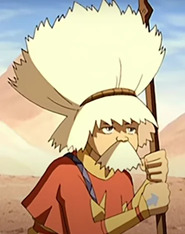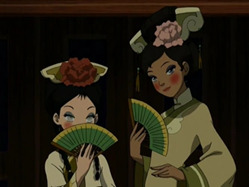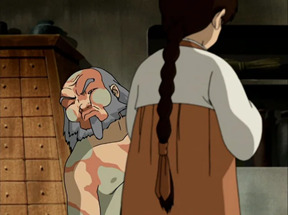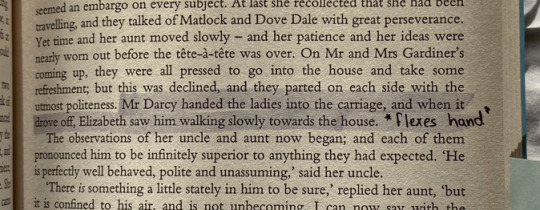#light tribe
Explore tagged Tumblr posts
Text

The pylidaigh, a type of vampiric snow ghost, as imagined in folklore in and around the Highlands.
This is a ghost believed to come into being when a person dies in the snow and their body is not found before their soul (still trapped without its funeral rites) 'freezes' inside of it. The body then reanimates into a pylidaigh's twisted form. It looks like someone who slowly died of starvation, just a thin layer of flesh over bones. Its skin is as white as the snow itself, so pale it can blend seamlessly into a blizzard. Most of its body appears subtly stretched and lanky, save for its exceptionally unsubtle long, skinny arms, which drag on the ground behind it when it walks. After a big meal of blood, its belly swells like the abdomen of a tick.
A pylidaigh can only tread across snow and ice, and so doorways and windows are best kept clear of snowfall during the winter in order to prevent it from reaching inside. It mostly comes out to hunt during blizzards when there is little that can prevent it from catching its victims.
In spite of its fragile appearance, a pylidaigh is supernaturally strong, and can run at great speeds when it wants to. No mortal weapons can pierce its body, nor can any bonds known to craftsmen hold it in place. It is usually said that chains forged like iron but made out of ice can bind a pylidaigh and render it immobile, but this smithing technique remains tragically elusive to the average joe.
This ghost is either cast as a wildly dangerous but tragic figure, or one that is more simply malicious. In either case, it is described as experiencing nothing but bitter cold. It shivers endlessly. It retains distant memories of what it was to be alive, and it is motivated by a futile desperation to experience the feeling of warmth again.
In more sympathetic framings, it is described as using its freaky gibbon arms to capture its victims and pull them into an embrace, rather innocently trying to warm itself against their body. This inevitably fails, and the embrace becomes a bone crushing squeeze. When that too fails to warm the ghost, it rips out the person's throat and drinks their blood until the victim is as cold and drained as the pylidaigh itself.
In other cases, this more pitiable narrative of a ghost seeking warmth with no comprehension of its actions is discarded in favor of making it purely monstrous. Here it is a type of vampire with an insatiable thirst, practically a physical manifestation of the worst of winter itself. Some tales acknowledge both variants, suggesting a pylidaigh's violent attempts to warm itself may be initially devoid of malice, but turns into an act of furious jealousy of the warmth of the living after years of suffering.
The only (more or less) surefire method to permanently kill a roaming pylidaigh involves trapping it with fire. They are attracted to any source of heat, and will attempt to warm themselves with the flames (if not tempted away by a juicy living human body). The fire itself cannot kill them (as the sheer cold of their body is more powerful even than flame) but they can be trapped if kept near the fire long enough for the snow it depends upon to melt. This does not kill the pylidaigh either. The monster will remain in stuck in place (and potentially become a threat again if it snows more) for the duration of the winter. Only when the spring comes and all the snow melts does it revert into a normal human carcass (though mysteriously invulnerable to decay), at which point it can be cremated.
Pylidaigh in the wilds also revert to a human corpse during the snowless seasons, but will roam again each following winter unless it is burnt in the interim. It is of critical importance that any human corpse found in high mountain pasture is cremated- not only out of respect for the poor soul trapped as an earthbound ghost, but to prevent the threat of the possible dormant pylidaigh emerging next winter.
#Imagine this thing Naruto running towards you at 20 mph#This was loosely inspired by me getting hypothermia once while camping very close to a town but on a mountainside a few#miles above it. Think it would be considered moderate I knew what was happening but was very confused and disoriented#Knowing my body was too fucking cold and my heartbeat was too slow and I couldn't stop shivering#Looking down on the lights below and being like Bro I Have To Get There And Get Warm Or Am Going To DIE#I woke up from sleep while in this state which like. Thank god because otherwise I might have legit died but it felt like I was dreaming.#It was so surreal just like walking then driving towards the lights knowing I NEEDED to get there NEEDED to get warm.#I was able to drive down without getting into an accident and got to a hospital so it ended up okay and my arms didn't strecth#out like a gibbon or anything.#folklore#hill tribes#I've been working on a pylidaigh folktale for a few days but it's taking a while because I keep going back and fourth on whether#I'll write it in character voice or not
693 notes
·
View notes
Note
short hair katara and long hair zuko !!

They're talking shit about Jet
#dema answers#zutara#atla#avatar the last airbender#zuko#katara#atla fanart#prince zuko#atla art#zutara au#National Dema AU Kisses Day#lee from the tea shop#zuko as lee#Lee and Kya From The Tea Shop AU#Lee & Kya AU#zutara fanart#zutara art#zuko art#zuko fanart#katara x zuko#zuko x katara#katara art#katara fanart#katara from the southern water tribe#Katara as Kya#They are the worst gossips EVER and you know it#Liz if you're seeing this please know that this is how Forgetting! Zuko looks like in my head#Maybe his hair is a bit shorter idk#Adult Zuko = Rapunzel Zuko because I say so#Zuko's hair is too naturally silky and shiny and smooth and by Agni's light he deserves to brag about it
668 notes
·
View notes
Text
What's in a Name: Fake Name Edition
I thought it'd be be fun to cover the silly pseudonyms that the characters have used in the show.

Bonzu Pippinpaddleopsicopolis - Buddhist Monk (房主) in Medieval Japanese... Pippinpaddleopsicopolis. Very subtle, Aang. ;)

Hua Mei - Beautiful flower (花美) in Mandarin Chinese. The name becomes hilarious when you consider that Katara chose the word Dung for Toph's pseudonym right afterwards.

Wang Fire - Literally the most common surname in China (王)... Fire.

Lee - Literally the second most common surname in China (李).

Mushi - Bug in Japanese (虫). Poor Iroh.
All in all, Katara and Zuko are both terrible at naming people on the spot.
#atla#avatar#avatar the last airbender#water tribe#earth kingdom#fire nation#air nomads#It feels like forever since I posted something light hearted#Did you guys know there's an old one-shot Avatar comic where Sokka enlists in the Fire Nation military for a day to gather information?#It's called Private Fire#Sokka and his dick jokes man#what's in a name
366 notes
·
View notes
Text


Assara, a fierce scarred warrior of the Galhot tribes, lives under the heavy shadow of her exile. Her heart consumed by vengeance, rage, and grief. But everything changes when a nameless human woman, frail with sickness, mysteriously appears in the harsh and unyielding land of the outcasts.
✨✨Last drawing of the year!! Happy 2025 ✨✨
Can't wait to post more on these two 👀 I should finish writing the first chapters of their story very soon ❤️
Galhot tribes created as part of my collab with @katerinaaqu
#assara#liora#assaraxliora#original characters#light of mine art#light of mine#chronicles of metamoor#oc ship#couple art#tribes of metamoor#wlw#wlw art#metamoor#meridian#artists on tumblr#my art#fantasy#high fantasy#collab with katerinaaqu#size difference
127 notes
·
View notes
Text
Lantern AU part 2
(This is part of an AU in which some of the lantern corps work differently for a bunch of reasons, here's a post explaining it:
https://www.tumblr.com/glitter-stained/758411385986220032/okay-so-to-be-honest-as-neuropsychology-major?source=share)
Kon: Holy shit, Rob, what's with the makeover?
Tim: Um yeah, so I guess I'm a Green Lantern now.
Kon: Well damn, I die and you become a whole new superhero? When did that happen?
Tim: Uh, somewhere between attempts 76 and 88 I think...
Kon: What?
Tim: What?
****
Cass: ...
Floating indigo ring:...
Cass: *squints*
Floating indigo ring: *flickers*
Cass: *tilts her head*
Floating indigo ring: *flips around itself*
Cass: *blinks*
The double dozen of goons she was busting: ...we could... Leave you guys to it?
Cass and the floating indigo ring: Shhh.
*****
Steph: Hey dad, it's visiting hour.
Arthur Brown: Stephanie? What are you doing in jai-
Steph: *punches him in the throat*
Steph: *kicks him in the shin*
Steph: *punches him in the face with a bright green giant fist construct*
Steph, looking down at the green power ring on her finger: Now where did that come from
****
Bonus:
Hal, coming back to earth after hearing there's a bunch of new lanterns in the rough that spawned around the same time: So what's been up with Gotham?
Bruce: My blood pressure
#the prison guard Steph payed to let her beat her father up when Arthur Brown's cell lights up with ethereal green light: what have i done#lantern au#batfam lantern au#lantern batfam#green lantern#indigo tribe#indigo lantern#green lantern tim drake#indigo lantern cass cain#indigo lantern Cassandra cain#cassandra wayne#green lantern steph#green lantern stephanie brown#robin#batman#batman & robin#spoiler#batgirl#batgirl ii#batgirl iii#black bat#orphan#bruce wayne#tired dad Bruce Wayne#dc#batfam#batfamily
151 notes
·
View notes
Text

#dark academia#poetry#quotes#literature#lit#light academia#words#aesthetic#poem#philosophy#books and coffee#coffee shop#coffee#history#art history#theology#science#old soul#find your tribe
77 notes
·
View notes
Text
Why do so many people unironically think the Fire Nation is the misogyny-less “girlboss” nation. What the fuck.
#avatar the last airbender#the fire nation#‘haha Zuko learns about misogyny’ he spent thirteen years around his dad I can guarantee you he knows what that is#like. the fucking weirdness of exalting the genocidal colonizer nation above all else aside#it’s just textually untrue?#Ozai kidnapped Ursa.#even if we don’t take the search as canon he still clearly has and wields power over Ursa#Azula becoming fire lord doesn’t mean Ozai is a guy supportive of girlbosses it just means he hates his son’s guts#and the title of fire lord he gave Azula was empty. it literally didn’t mean anything. like he pronounced himself Ruler of the World#and declared there would be no more nations it would just burn under him#like Zuko is not some enlightened feminist#like sure maybe we could argue that the fire nation in LoK is a lot better but also the Fire Nation is like…never talked about in LoK#and there’s something incredibly gross about all these headcanons about Enlightened Feminist Zuko (Fire nation)#showing the Evil Reductive Misogynists (water tribe) the light#like you realize how weird that is right#right.
170 notes
·
View notes
Text











A fairy needs to be fabulous all the time - Evergreen's outfit
Must say I have a soft spot for the colour red on her... It suits her ~
Bonus Outfit her "wedding dress"

#evergreen fairy tail#Evergreen ft#fairy tail#fairy tail 100 yq#elfever#raijinshuu#elfgreen#thunder god tribe#evergreen (ft)#fairy tail 100 years quest#juvia lockser#hiro mashima#elfman strauss#ElfmanxEvergreen#flashing lights#flash warning#editing
137 notes
·
View notes
Text

Anaïs Nin // so coquette <3
#feminine#antique#light academia#lana del rey#80s#vintage#ethel cain#dark academia#goth aesthetic#selofan#twin tribes#southern gothic#punk rock#woman#angel dust#shy#coquette#im just a girl
164 notes
·
View notes
Text



#pride and predujice#pride and prejudice aesthetic#jane austin quote#jane austen#jane austen books#Jane Austen tribe#enemies to lovers#hand flex#light academia#dark academia#dark academia vibes#aesthetic#spilled thoughts#light acadamia
473 notes
·
View notes
Text









Katara (ATLA)
#livi’s moodboards#aesthetic#moodboards#moodboard#cartoons#Nickelodeon#blue#white#atla#light blue#water#waterbending#avatar#avatar the last airbender#katara#water tribe#ocean#sea#fish#koi#moon#holiday#Christmas#Moodboard advent calendar
45 notes
·
View notes
Photo

Silent Tribe (1 of 2) - Christian Bravery
#Silent Tribe#Christian Bravery#Arctic#loneliness#northern lights#darkness#stars#winter#scenery#Savage Bites#dark fantasy#digital art
84 notes
·
View notes
Text










The Tulalip Casino in Tulalip, Washington, has the most Christmas lights in the entire state with just under 8 million lights. It's gorgeous and uplifting to stand among these glorious lights. It's illuminating for the soul. I go to see them every year. They bring me so much joy as I stand there basking in their beauty and glory!!! This is, truly, a celebration of the beauty of Christmas and the beauty of man!!! It's ironic that it's found at a casino, but that's a rant for a different post. That being said, I want to say thank you to the Tulalip tribe for these beautiful lights!! It's a magical place to visit!! 😁😍🙏🏼🎅 🧑🎄 🎄✨️ Merry Christmas and Happy holidays to all and to all a good night!!
#Christmas lights#Christmas#Tulalip#Washington#casino#Tulalip Indians#8 million lights#illuminating#gorgeous#beautiful#love#happiness#thank you#sharing#joy#thank you to the Tulalip tribe!!#bless you all#happy holidays#merry christmas#hope#glorious#spectacular#phenomenal#vivid#colors#spirit
46 notes
·
View notes
Text
When can Genshin's character designers catch up with the composers
youtube
#genshin impact#natlan#music#as i understand it 5.0 will introduce only 3 tribes out of 7? but why are they all so light
54 notes
·
View notes
Text

Epic: The Musical but in Wings of Fire
yes I have more ideas to this
yes I am stretching the limits of how wof dragons work
shhhhhhh, pretty red :)
[ID: A monochrome piece made with various shades of red. the background is the darkest with a circular fade to the lightest red in the middle to show a light source. However standing in front of that light source is a massive, heavily built dragon based on Mudwings and Seawings from Wings of Fire. It’s twisting its body and facing the screen with a toothy scowl. Closer to the screen is a much skinnier dragon (based on a Skywing) with an open mouth snarl, looking at the massive dragon. To show a size difference, three similar dragons are around the big one, two flying and holding spears while another is on the ground, snarling with outstretched wings. there is a spear and a wing under the massive dragons foot. END ID]
#wings of fire#dragons#art#design#mudwing#seawing#hybrid#skywings#Polyphemus is a massive Mud/Sea hybrid#because I said so#I agree he could be any other tribe for ‘insert reason here’#but imagine a sib group#of massive mud/sea hybrids#I imagine in a storyboard tht when the sibs cut in#it’s just bigger and bigger dragons with smaller and smaller sheep#Also i don’t practice lighting very much#but i’m very proud of this
61 notes
·
View notes
Text
TRADITIONAL FOODS OF THE HIGHLANDS
The Highlands or 'Greathill' is a region in the central north-northwestern territory claimed by (but almost entirely uncontrolled by) the Wardi Empire. They are inhabited by a network of peoples collectively referred to as the Hill Tribes, who are not a unified or monolithic group but share ancestry, similar means of subsistence, and a common traditional diet.
The highlands are regionally unique for their altitude and relatively cool temperatures (and is the only part of the region that can expect snow on a yearly basis, with some of the highest peaks receiving snowfall year-round). The climate is overall dry, though the rivers are usually well fed by high altitude rains and snowmelt, and the river valleys are wet enough year-round to sustain woodlands and more delicate agriculture.
Most vegetables can only reliably farmed in the river valleys, and these key regions are typically under the control of specific clans or tribes who dominate intra-Highlands trade networks. Those living outside of the river valleys have only occasional access to most farmed vegetables, and foraging is an important supplement to the core diet. Hardier crops are grown on terraced slopes, and the vast majority of the landscape is used as grazing pasture.
The regional cuisine revolves around grain (especially barley and most often taken in the form of bread), meat, cheese, milk, and yogurt. The flavoring stands in stark contrast to the surrounding Wardi cuisines, traditionally being only lightly seasoned (few spices are natively available) and mostly reliant on subtle herbal flavoring, though both palates are in agreement on the value of capsaicin.
Many of the Hill Tribes (or individual clans) have trade connections outside of the highlands, but food (aside from livestock) and spices are not common imports. The majority of the population have maintained traditional culinary practices that are unique among the wider region (though with some inevitable cultural cross-pollination).
Most dishes are eaten by hand out of serving plates and bowls, with spoons used for some soups and porridges. Almost every meal is served with flatbread, which is torn off and used to collect and eat the rest of the food. It is considered good manners to save a piece of bread for last, which will be used to soak up any remaining juices after a plate is cleaned (not doing so is a mild insult to the cook).
Tea is an important part of the daily routine, and is served alongside each meal. Traditional teas in this region are exclusively herbal and consumed for both taste and medicinal purposes, and none are caffeinated (though one has a stimulant effect). Tea is by far the most popular edible import in trade with the broader Imperial Wardi region (along with salt), with imports of tea leaves being desirable and having become quite popular in the last century.
Staple foods:
Barley- the absolute most important staple grain. Most barley grown in the region is a strain that better tolerates the highland’s regionally unique combination of seasonal cold, dry climate, and high altitudes.
Wheat- more delicate than barley and not as widely grown, but a key crop in the more fertile river valleys
Kulys- a native hardy, spiny plant that stores water in its trunk and is tolerant to dry and cold seasons. Its young stalks are edible, but the fruits and flowers are of greater regional importance. The flowers are used for a lightly sweet herbal tea, and the fruits are a important to the diet and usually eaten on their own.
Amaranth- a species of amaranth is regionally native and domesticated, with seeds eaten whole or ground into flour and leaves being used for green vegetables.
Squash- grown only in the river valleys and a key item in trade within the highlands. Squashes are found nowhere else on this side of the Viper seaway, and were likely brought along overseas by the original migrant population.
Chili peppers- several strains are grown in the region (ranging from very mild to chiltepin levels of capsaicin) and mostly used to create spicy yogurt sauces and to flavor stronger dishes.
Wild onion- a region-specific onion species, tolerant of harsh growing traditions but difficult to propagate, mostly foraged.
Magah- a farmed. potato-esque tuber, more strongly flavored and bitter than potatoes.
Dairy products- dairy is foundational to the diet and used to create a variety of yogurts, creams, butters, and cheeses, and milk is often consumed on its own. Cattle and horse milk is preferred, khait will be opportunistically milked but have much lower yields.
Cattle- Cattle are of utmost and absolute importance to the diet (in the form of meat and milk) and overall lifestyle. Wealth is primarily measured in the size of cattle herds. The native landrace of cattle is well accommodated to altitude and seasonal cold, though many breeds have been obtained in trade.
Horses- (the small, three toed kind) They are of secondary importance to cattle in terms of livestock, used for meat, wool, and milk.
Taarn- a type of pheasant native to the region that has been domesticated for meat, fares best in river valleys.
Honey- Beekeeping is a well established practice, and honey is the sweetener of choice and highly valued. Bee larvae are also sometimes roasted and eaten.
Bread- made with wheat, amaranth, or barley flower (or all three), a part of most meals. A type of flatbread is used as a base to scoop up other parts of the meal.
Wild game:
gazelle, antelope, hippegalga, and deer.
aurochs (sometimes found in the low river valleys and foothills)
crocodiles (mainly found in the Erubin river valley)
ducks and geese
unkata (a genera of cassowary sized flightless birds, a smaller subspecies of which can be found here as a grazer)
grynaig (a native species of pidgeon which nests among boulders)
piispiispi (a lagomorph that can be found at high altitudes, somewhat resembles a marmot. The name is onomatopoeia based on their shrill calls)
fish (especially trout), frogs, freshwater mussels, and crayfish from the rivers.
Native fruits: wild plum, dirrucag (a shrub that produces small fruits, roughly comparable to autumn olive), wild rose hips (used for tea and jams).
Other vegetables (cultivated and wild): cabbage, onions, garlic, carrots, rapeseed, peas, wild amaranth, mustard greens, nettles (the latter two also being regionally unknown and likely brought in the original migration).
Herbs/spices: relatively few spices are natively produced. Fennel is reliably grown. A type of sumac can be obtained in the river valleys, and a couple native sages and mints can be found throughout the region.
Alcohol: murre (a relatively strong (8-10% abv) alcoholic beverage made with fermented fruit and horsemilk), mead, kulys wine, and a few wheat and barley ales.
Teas/non-alcoholic beverages:
-Kulys flower tea (a mildly sweet herbal tea with nuanced, delicate flavors, usually consumed on its own without a meal)
-Brolge tea (a bitter tea made with the brulge leaf, which has a mild stimulant effect (comparable to coca in composition, but a different kind of plant) and is often consumed in the mornings. (This plant is known as bruljenum in Imperial Wardin))
-Floral tea (tea made with a variety of edible wildflowers, with plum and rose flower being especially favored, and rosehips added for tartness. Often served with milk)
-Nettle tea (favored as a soothing evening tea for its rich, earthy flavor)
-Mint tea (it's mint tea)
-Roasted barley tea (an everyday staple, often taken with milk or butter and honey, or mixed with herbal ingredients).
-Honey-garlic tea (usually uses roasted barley as a base, boiled together with garlic that has been fermented with honey. Preferred by herders for a warming effect on cold nights).
-Green tea (the preferred untreated variant of imported tea leaves)
-Fermented tea (a combination of imported tea leaves and a native preference for fermentation)
-A sour fermented horsemilk beverage, best taken with salt and/or honey.
-a fermented cowsmilk and yogurt beverage, taken with mint.
-A beverage made with mead, extra honey, hot peppers, and chopped garlic boiled together. Consumed for its warming qualities and to treat colds.
Examples of Dishes:
-flatbread (the base of most meals, made with wheat, barley, and/or amaranth flour. Assume that most non-grain based foods described here are served along or atop it)
-a spicy yogurt sauce made with finely chopped hot peppers, sometimes garlic
-a sour yogurt sauce made with sage, mint, or fennel.
-A type of thick dumpling, stuffed with a variety of foods (beef or horse, wild game, onions, fennel, magah, cheese, etc) and used as a common element of meals. Most comparable in shape to a pierogi.
-fried or baked dough balls with cheese and herbs
-taarn pheasant with a butter and plum or dirrucag sauce.
-beef stock soup with dumplings, onion, and curd cheeses
-beef or horse tartare with melted butter. Sometimes eaten on its own, sometimes sprinkled with herbs or topped in a spicy yogurt sauce.
-wheat or barley porridge with milk, yogurt, or butter, sometimes sweetened with honey.
-broth made with beef trotters and lightly flavored with herbs, often used as a base for other dishes but usually sipped.
-savory barley porridge cooked in beef or horse stock (often as a base for meat dishes)
-cheese, beer, and meat stock soup, often with peas, onions, magah, barley, and/or amaranth.
-yogurt, mint and fennel soup
-plain yogurt with mint and honey
-a mildly sweet porridge made with mashed squash, barley, and milk
-sweet snacks made with amaranth seeds, honey, and dried fruit.
-piispiispi stuffed with herbs and onions and roasted
-mashed magah, basic dish of thoroughly cooked magah, mashed with butter, cream, or yogurt.
-boiled, minced magah with minced meat, mild peppers, and fennel, best topped with a sour yogurt sauce.
-mustard and other wild greens, usually cooked down with butter or beef fat and mixed with onions
-an absolute litany of cheeses, often made with delicate herbs or strong peppers. Soft cheeses are generally favored and most widely used in cooking, hard cheeses are eaten on the go.
-Beef or horse testicles, usually cooked in a butter sauce as part of a larger meal. (most commonly obtained as a byproduct of gelding, in which case it is thought to uniquely boost fertility in ways that testicles obtained in slaughter do not)
-a mild pastry stuffed with soft cheese and topped with honey
-a nettle soup and onion soup, best taken in a fish or shellfish broth for enhanced umami flavor.
-Cow head that has been de-haired and de-brained, smoked, and slowly cooked with herbs and vegetables until tender. This is eaten at wedding celebration- the husband's family will have slaughtered the cow as a bride price. The husband and wife are given the choice, fatty cuts, the marrying families share the rest of the meat, and the broth is sipped by all guests.
-cow or horse brain, minced and fried in butter with onions and served atop mashed magah.
-blood sausage, with grain or magah and wild onions for filler.
-a spicy soup or stew made with boiled crayfish, onion, hot peppers, and cream.
-smoked trout with honey
-roasted honeycomb with larvae
#Give it up for: Another food post!!!!!!!!!#A lot of these dishes would be more of an occasional thing rather than everyday meals fyi#I snuck a less horrific variant of my evil hot toddy recipe in here. This is the established culture that would most appreciate the concept#Unfortunately there is no lore friendly Fireball#Also I came up with the honeycomb with larvae as just. a likely way to eat bee larvae? And then googled it and it's real.#Grilled as street food in Laos/Cambodia/Thailand. And oh my god it looks so fucking good like apparently the larvae have kind of a#light honey/nutty flavor and everything. Which sounds like it would be amazing with honeycomb . I need it so fucking bad.#hill tribes
64 notes
·
View notes